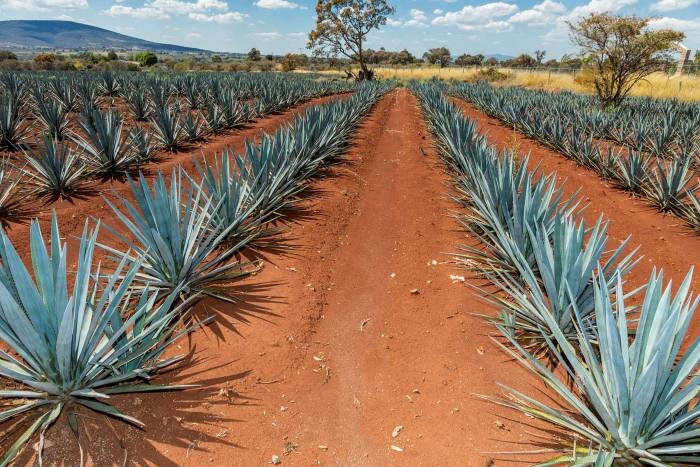What Is Pisco?
Unveiling the World of Pisco: A Bartender's Guide
"Pisco" is a cultural emblem with deep roots in South American history. The name "pisco" comes from the Quechuan word "pishku," meaning bird, which refers to a valley on the Peruvian coast where the spirit was first produced. Pronounced 'PEE-sko,' this aromatic grape brandy is made through a meticulous distillation process that captures the essence of the terroir, making it a symbol of national pride in both Peru and Chile.
Types of Pisco
Puro and Acholado
Pisco comes in two main varieties: Puro (pure) and Acholado (blend). Puro is made from a single grape variety, showcasing the unique characteristics of that grape. In contrast, Acholado is a blend of different grape varieties, resulting in a more complex and nuanced flavor profile. Each sip of Puro or Acholado is a journey through the diverse landscapes of South American vineyards.
Grape Varieties
Quebranta
One of the most prominent grape varieties used in pisco production is Quebranta. Known for its resilience and adaptability, Quebranta grapes contribute to the robust and full-bodied character of Puro pisco. With a flavor profile featuring earthy notes and a touch of spice, Quebranta has become a backbone of traditional pisco.
Muscat
Muscat, on the other hand, is the maestro of aromatic and floral notes in pisco. This grape variety adds a delightful fragrance to the spirit, creating a harmonious balance in both Puro and Acholado styles. The Muscat grape elevates pisco with its fruity and floral characteristics, making it a favorite among those who appreciate a more aromatic profile.
Torontel and Italia
Torontel and Italia grapes bring their own unique contributions to the pisco lineup. Torontel is renowned for its sweetness, adding a luscious and honeyed dimension to the spirit. Italia, with its aromatic and tropical fruit notes, complements the overall flavor palette, contributing to the complexity found in Acholado pisco.
Historical Insights
Pre-Colombian Beginnings
Pisco's historical roots can be traced back to pre-Colombian civilizations that inhabited the coastal regions of what is now Peru. These ancient cultures cultivated grapes and developed rudimentary techniques for fermenting and distilling grape juice. Pisco, in its earliest form, was likely produced for local consumption and ritualistic purposes.
Spanish Influence
The Spanish introduced grapevines to South America in the 16th century, significantly impacting the production of pisco. The art of distillation, brought by Spanish settlers, refined the process, transforming pisco into a distinct grape brandy. The spirit quickly became a popular and integral part of colonial life.
Independence Era
During the struggle for independence in the early 19th century, pisco played a symbolic role. It became a source of national pride for both Peru and Chile, and its production methods evolved, influenced by the changing political landscape. As a result, distinct styles of pisco emerged in each country, leading to the ongoing debate over its origin.
What is Pisco Made From
Ingredients and Distillation
Now, let's get into the nitty-gritty of what goes into crafting this exquisite spirit. Pisco is made from the fermentation and distillation of fresh grape juice. The specific grape varieties, the climate, and the altitude of the vineyards all contribute to the unique flavor profile. The distillation process emphasizes capturing the pure essence of the grapes without aging in wood, resulting in a crystal-clear liquid that's bursting with natural flavors.
Distinctive Characteristics
The distillation process is a crucial aspect that sets pisco apart. Unlike some spirits that undergo aging in barrels, such as scotch, pisco is bottled directly after distillation, preserving the freshness and purity of the grape flavors. The result is a spirit with a smooth and clean profile that allows the natural grape characteristics to shine through.
How to Drink Pisco
Tasting Techniques
Now that we know what goes into pisco, let's talk about how to savor it properly. Pour yourself a glass, and take a moment to appreciate the aromas. Swirl it gently to release the bouquet, then take a slow sip, allowing the liquid to coat your palate. Notice the layers of flavors – the fruity notes, the floral undertones, and perhaps a hint of spice. Pisco is best enjoyed when you take the time to savor and appreciate its complexities.
Glassware and Temperature
Choosing the right glass can enhance your pisco experience. A tulip-shaped glass concentrates the aromas, allowing you to fully appreciate the nuances.
What Does Pisco Taste Like
Flavor Notes
Pisco is a symphony of flavors, each note playing a vital role in the overall composition. Muscat grapes bring floral and fruity elements, while Quebranta delivers a robust and earthy profile. Torontel adds sweetness, and Italia contributes a unique aromatic character. The result is a spirit that's both versatile and distinctive, offering a myriad of tasting experiences.
Comparisons with Other Spirits
If you're new to pisco, drawing comparisons can be helpful. Picture the floral elegance of a good gin, the complexity of a fine brandy, and the mixability of a great vodka – that's pisco for you. Its versatility makes it a bartender's dream, allowing for creative experimentation in crafting unique cocktails.
Pisco Cocktails
Classic and Creative
Now, let's get to the fun part – cocktails! Pisco's versatility shines through in an array of classic and creative concoctions. From the iconic Pisco Sour to inventive twists, there's a pisco cocktail for every palate.
Pisco Sour
The Pisco Sour is undoubtedly the superstar of the pisco cocktail world. This classic has a rich history dating back to the early 20th century and is considered the national drink of both Peru and Chile. The recipe typically involves Pisco, fresh lime juice, simple syrup, and an egg white, creating a frothy and refreshing masterpiece.
A Brief History of the Pisco Sour
The Pisco Sour's origins can be traced to the bar scene in Lima, Peru, during the 1920s. It is widely credited to Victor Morris, an American bartender who opened Morris' Bar in the Peruvian capital. The cocktail gained popularity, and its fame spread to Chile, sparking the ongoing debate about its true birthplace.
Why the Pisco Sour is Iconic
The Pisco Sour has become an iconic representation of the spirit for several reasons. The use of fresh lime juice provides a zesty kick, the egg white imparts a velvety texture, and the overall balance showcases the best qualities of pisco. Its popularity also lies in its adaptability, with variations and regional twists adding to its allure.
More Pisco Cocktails
Pisco Punch
Another classic worth exploring is the Pisco Punch. This historical libation traces its roots to San Francisco in the late 19th century, where it gained fame at the Bank Exchange bar. With a delightful blend of Pisco, pineapple, citrus, and a touch of sweetness, the Pisco Punch remains a crowd-pleaser with a tropical twist.
Maracuya Sour
For those seeking a fruity adventure, the Maracuya Sour, featuring passion fruit (maracuya), adds a tropical flair to the traditional Pisco Sour. The passion fruit's sweet and tangy notes elevate the cocktail, creating a delightful fusion of flavors.
Chilcano
Looking for a simple yet satisfying option? The Chilcano, a highball cocktail featuring Pisco, ginger ale, and lime, is a refreshing choice. It's a testament to how a few quality ingredients can come together to create a drink that's both easygoing and sophisticated.
Step-by-Step Recipes
Pisco Sour
2 oz Pisco
3/4 oz Fresh lime juice
1/2 oz Simple syrup
1 Egg white
Dry shake, then shake with ice. Strain into a chilled glass. Garnish with a few drops of bitters.
Pisco Punch
2 oz Pisco
3/4 oz Pineapple juice
1/2 oz Simple syrup
1/2 oz Lemon juice
Combine all ingredients in a shaker with ice. Shake well and strain into a glass with ice. Garnish with a pineapple slice.
Maracuya Sour
2 oz Pisco
3/4 oz Fresh lime juice
1/2 oz Maracuya (passion fruit) puree
1/2 oz Simple syrup
Shake all ingredients with ice and strain into a chilled glass. Garnish with a slice of passion fruit.
Chilcano
2 oz Pisco
3/4 oz Fresh lime juice
4 oz Ginger ale
Build in a highball glass with ice. Stir gently and garnish with a lime wheel.
Pisco in Culinary Delights
Pisco-infused Cuisine
Beyond the glass, pisco plays a captivating role in the culinary world. Chefs and home cooks alike use this versatile spirit to enhance both savory and sweet dishes. From pisco-marinated meats to desserts adorned with pisco-infused sauces, exploring the culinary side of pisco is a delightful adventure.
Pisco-Pairing Tips
When it comes to pairing pisco with food, consider the spirit's versatility. A floral and fruity Acholado can complement seafood dishes, while a robust Quebranta pairs well with grilled meats. Experiment with pairings and discover how the flavors of pisco can elevate your dining experience.
Substitute for Pisco
Exploring Alternatives
If your bar cart is missing a bottle of pisco, fear not! You can experiment with other grape-based spirits like brandy or even explore regional alternatives. Just be prepared for a slightly different but equally enjoyable experience.
Adjusting Recipes
When substituting, consider the flavor profile of the alternative. Adjust the quantities and maybe add a hint of citrus to mimic pisco's brightness. The goal is to create a cocktail that satisfies your taste buds.
Pisco Culture and Events
Festivals and Gatherings
Pisco isn't just a drink; it's a celebration. Dive into the vibrant world of pisco culture by attending festivals and gatherings. Immerse yourself in the lively atmosphere and connect with fellow enthusiasts.
Social Experience
Pisco is best enjoyed in good company. Share a bottle with friends, learn about each other's favorite varieties, and create lasting memories. It's not just a drink; it's an experience.
Common Misconceptions
Dispelling Myths
Let's address some misconceptions. Pisco is not just brandy by another name; it has its own distinct identity. Embrace the regional variations, appreciate the craftsmanship, and enjoy the diversity this spirit brings.
Regulatory Insights
Understanding the regulations surrounding pisco production can clear up confusion. Each country has its own rules, so explore the nuances and appreciate the unique qualities that arise from these regulations.
As we wrap up this extensive journey into the world of pisco, I hope you're as excited as I am about this versatile and flavorful spirit. Whether you're sipping it neat, shaking up a cocktail, exploring culinary delights, or immersing yourself in cultural events, pisco has something for everyone. So, grab a bottle, gather your friends, and let the pisco adventure continue! Cheers!
More Spirit Guides
Search Drinks
Cocktails, Non-alcoholic, Wine, Coffee, Drink guides, Techniques, Fermentation
All Recipes
Hi, I’m Cameron, guv’nor of Smartblend. If you liked this then you’re in luck, I have a bunch more recipes like it. I share only vegetarian and pescatarian food recipes, cocktails, and drink guides with a sprinkling of wellness and mindful drinking. If that sounds like you, then stick around!
Related Recipes
Smartblend is a participant in the Amazon Services LLC Associates Program, an affiliate advertising program designed to provide a means for sites to earn advertising fees by advertising and linking to amazon.co.uk and amazon.com. Smartblend does earn a small commission on goods purchased through the included links. Don't worry, it doesn't cost you any more, but we do appreciate your referral!




































